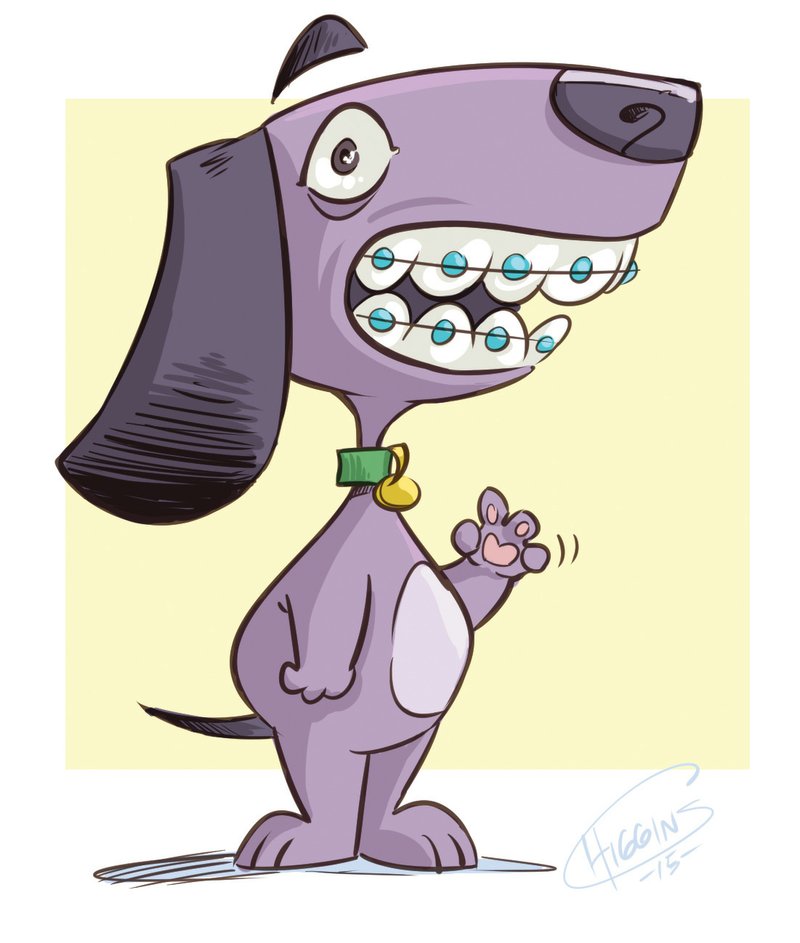I saw something on Animal Planet about dogs wearing braces on their teeth. I just saw the end of the show so I missed almost all of the story. Why would a dog even need braces?
As hard as it might be to imagine, some dogs need orthodontic devices such as braces to correct dental problems that cause pain or otherwise affect their quality of life. Doggy orthodontics have nothing to do with giving a pooch a picture-perfect smile.
Veterinary dentist Daniel Carmichael says in an article at DVM360.com that canine braces are used when "malocclusions" or malformations of the teeth make it difficult for a dog to chew or close its mouth.
Misplaced canine teeth (the pointy ones in the front of a dog's mouth) can puncture a dog's upper or lower palate, Carmichael says. That can happen when a dog's lower teeth project beyond the upper teeth, resulting in an "underbite" that may allow the upper canines to push down on the lower palate. Likewise, the lower canines may press on the soft upper palate if the dog's upper teeth project past the lower teeth to create an overbite.
Another dental problem affecting some dogs is overcrowding. When teeth are crowded and overlapping, a dog may not be able to close his mouth or chew properly. Crowding also creates a breeding ground for bacteria that leads to decay and infection.
Braces for dogs are actually elastic bands that fasten onto "buttons" formed of a composite material that are attached to the teeth. They usually aren't noticeable unless a person knows they're there. Carmichael explains that the buttons and bands put pressure on the targeted teeth to gradually change their position in the jawbone. The procedure works more quickly for dogs than for humans; while people may wear braces for years, canine orthodontic procedures typically show results within months.
A few years ago, I talked with a man whose Yorkshire terrier needed braces to straighten its upper canines. The tiny dog's teeth were jutting forward instead of downward. The dog drooled a little more than usual when the braces were first attached, but eventually didn't seem to notice them at all. The Yorkie's owner spent more than $1,000 to straighten his dog's teeth. As with orthodontic procedures for humans, the price of braces for dogs can be expensive; the price tag depends on the severity and complexity of the problem needing correction.
While the notion of braces for dogs is still a new one for many people, canine dentistry has progressed a step further, according to the February issue of Dog Fancy. The latest procedure for moving individual teeth is the "arch bar" in which elastic bands are attached to a metal bar that reorients misplaced teeth.
Complicated orthodontic procedures aren't appropriate for every dog with a dental problem, the article says. Sometimes a veterinarian may decide to pull a misplaced or bothersome tooth instead of trying to move it. A tooth might also be straightened by cutting it in half and crowning it.
Veterinary dentistry is a specialty requiring specific training and certification. To find a board-certified veterinary dentist, check the American Veterinary Dental College website at avdc.org.
...
The Veterinary Oral Health Council, which reviews oral-care products (chew toys and more) for dogs and cats, recently added Milk-Bone Brushing Chews for Dogs and Greenies canine hip and joint care dental chews to its list of "accepted" products.
To gain the council's approval, a product undergoes trials to determine if the product effectively reduces plaque and tartar that can lead to periodontal disease such as gingivitis. Since the council was formed by the American Veterinary Dental College in 1998, only 37 products have been added to the list, which can be found at vohc.org.
Family on 01/14/2015
